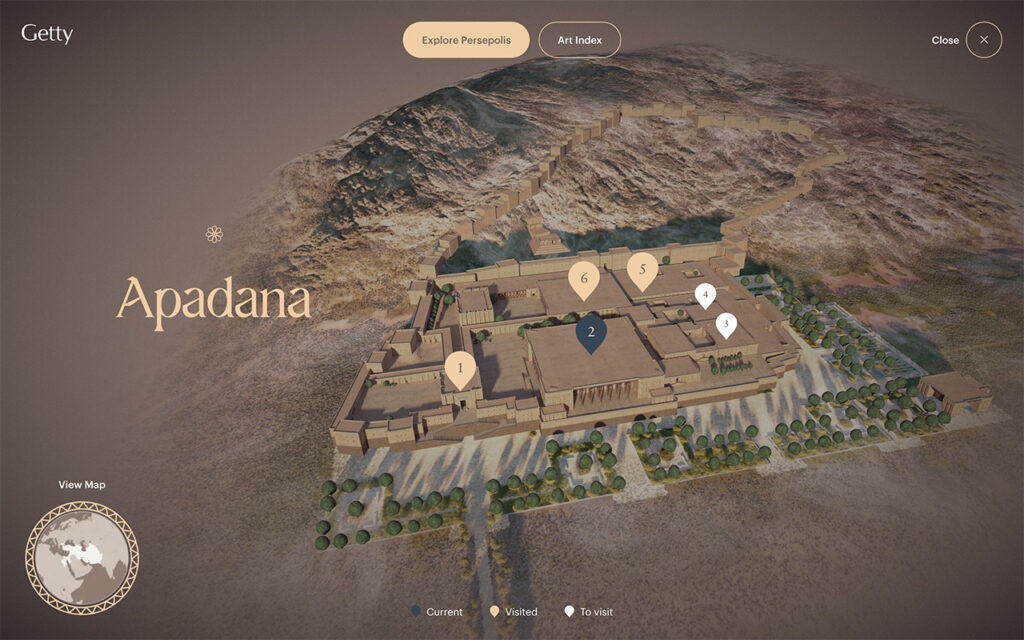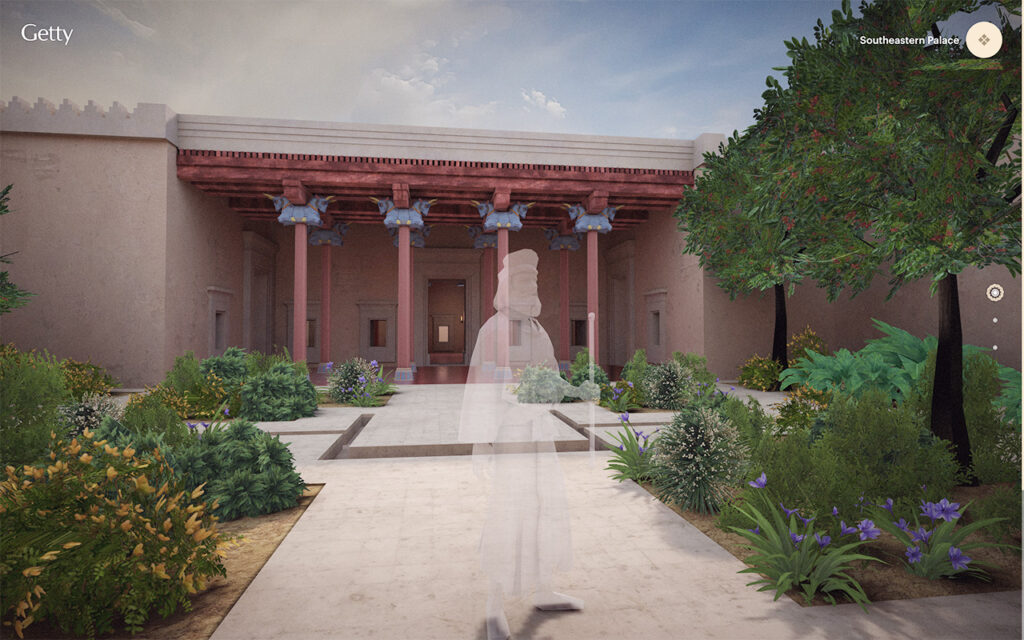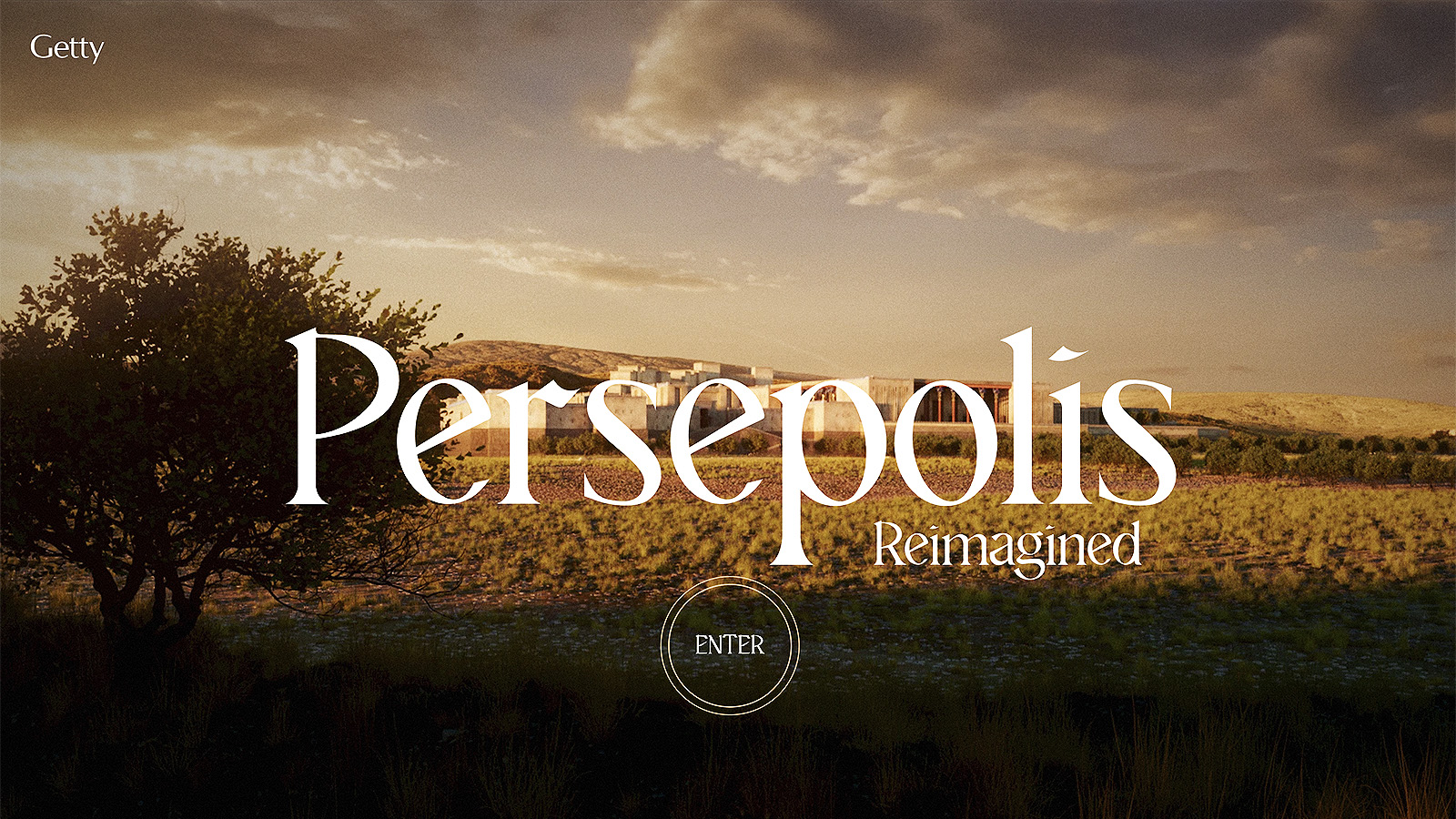The Getty Museum is currently knee-deep in its exploration of how the Classical worlds of Greece and Rome rubbed shoulders with their neighbors including North Africa, the Middle East, and Central Asia. Following 2019’s Beyond the Nile: Egypt and the Classical World, the institution opened Persia: Ancient Iran and the Classical World on April 6, billed as the first major US show to examine the artistic and cultural relationships between Ancient Greece, Rome, and Iran. (A third exhibition, Thrace and the Classical World, is planned for 2024.)
Significantly, Persia has been developed as a phygital offering, pairing an immersive physical exhibition with a digital experience. Together, they recount a centuries-spanning history through artifacts, artworks, virtual recreations, and historical documents, some loaned from major museums in the US, Europe, and Middle East.
What happened

Persepolis Remagined, the digital experience accompanying Persia, enables visitors to tour digital 3D recreations of six sites within Persepolis, including Apadana, the Royal Treasury, and the Hall of 100 Columns. Image: Persepolis Reimagined
Onsite at the Getty Villa, Persia arrays a number of ancient works and objects, supported by a transportive 360-degree film. Dubbed the Palace Experience, the five-minute film immerses viewers within Persepolis, once the seat of the first Persian Empire, taking them through digital recreations of the capital’s palaces, audience halls, and structures like the Gate of All Nations. The HD experience was made possible with virtual production, technology that, most notably, was used in the making of Disney’s The Mandalorian.
Accompanying the physical exhibition is a digital one, titled Persepolis Reimagined and produced by Media.Monks. On the platform, visitors can explore 3D models of six sites within Persepolis, from the Royal Treasury to the Hall of 100 Columns, unlocking historical information as they scroll through the structures. Each recreation has been assiduously detailed with historically accurate colors and textures. When not touring the experience through a map, an Art Index enables audiences to navigate the platform through objects including sculptures, jewelry, weapons, and coins.
Why it matters

The digital experience also backgrounds each site with historical information of the structure and artifacts on view. Image: Persepolis Reimagined
The Getty’s hybrid presentation of Persia effectively captures the cultural experience in our post-lockdown moment. Combining formats and elements such as immersion and interactivity, the physical and digital blend aims to appeal to both onsite and online audiences (particularly at a time when museum visitorship remains dicey), while, more critically, elevating the program’s storytelling and educational bent. Other institutions from Berlin’s Alte Nationalgalerie, with Magical Reflections, to London’s Serpentine Galleries, with KAWS: NEW FICTION, have similarly offered such multi-platform experiences.
And this, of course, is not the Getty’s first go-around with digital experiences. In 2019, it unveiled the online-only exhibition Bauhaus: Building the New Artist, before expanding its digital offerings with 2020’s 12 Sunsets, a virtual road trip through Ed Ruscha’s oeuvre, and last year’s Return to Palmyra, a survey of the ancient trading center.

Launched last year, MESOPOTAMIA featured objects from Getty Villa, captured using photogrammetry and in some cases, additional LIDAR and structured light scanning to replicate every detail. Image: MESOPOTAMIA
Of note, these digital projects have increasingly improved on both user interactivity and accessibility: for example, 2021’s MESOPOTAMIA, which invites visitors to delve into high-definition renderings of ancient Mesopotamian artifacts, can now be viewed in six languages. These digital developments do deliver on Getty’s promise to “blend technology, design, and unique approaches to visual and verbal storytelling,” but additionally point to the organization’s broader bid to reach visitors beyond its vicinity.
What The Getty said
“Two innovative digital experiences — one an immersive onsite experience at the Villa; the other accessible online — will allow visitors to walk in the steps of a Persian dignitary through a digital reconstruction of the spectacular Achaemenid palace of Persepolis. These new tools, in partnership with the latest scholarship, can provide dynamic, interactive engagement with distant places and cultures, and we hope to expand their use in the future.” — Timothy Potts, Maria Hummer-Tuttle and Robert Tuttle Director, J. Paul Getty Museum



